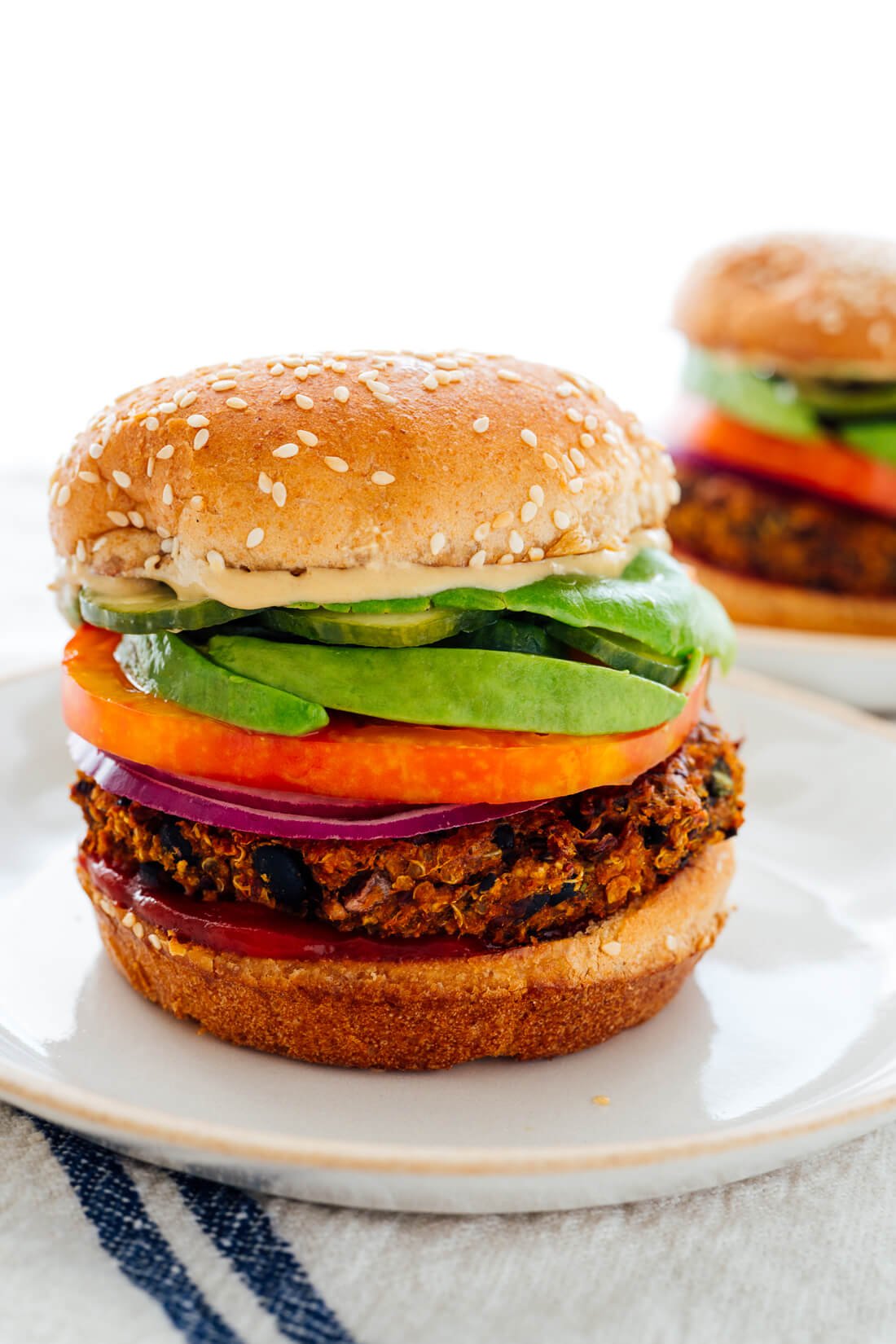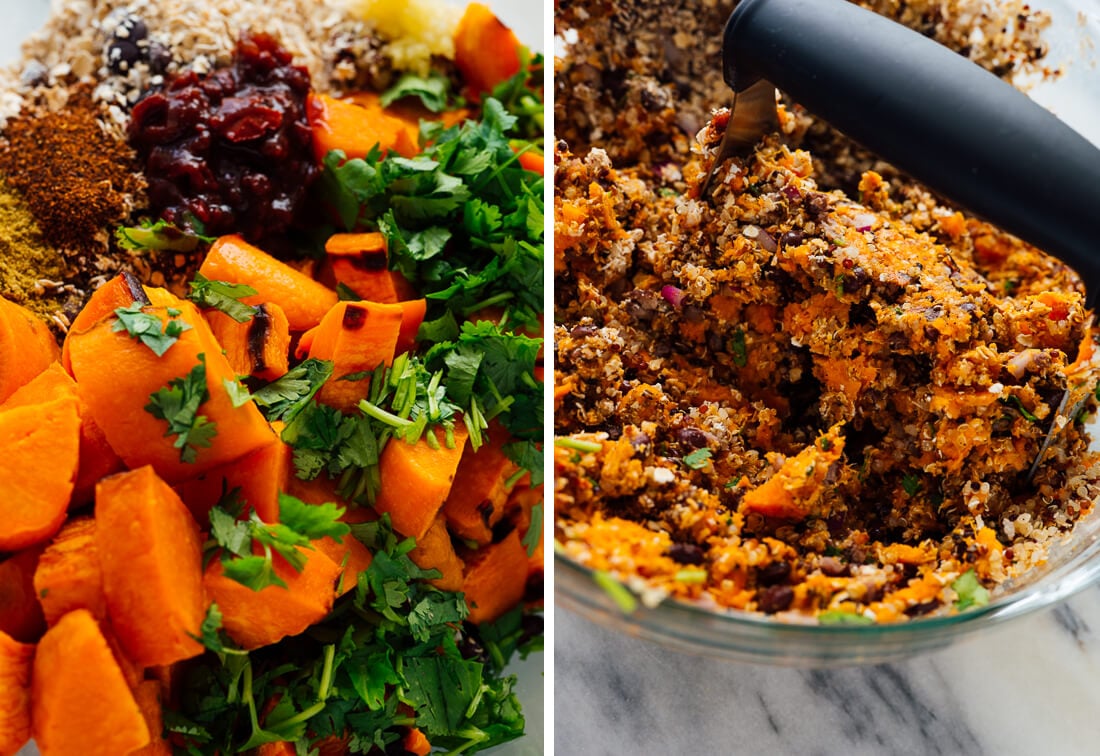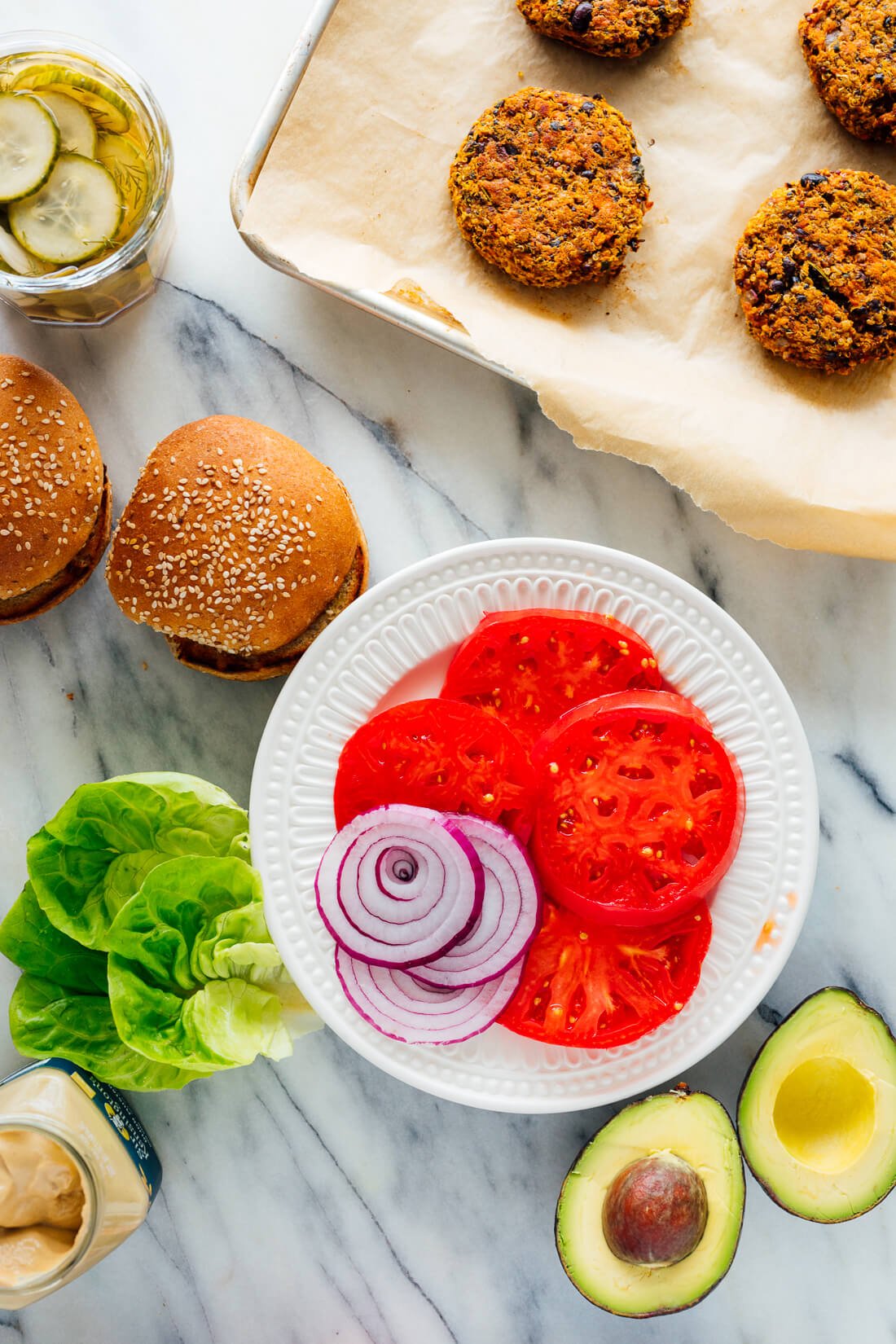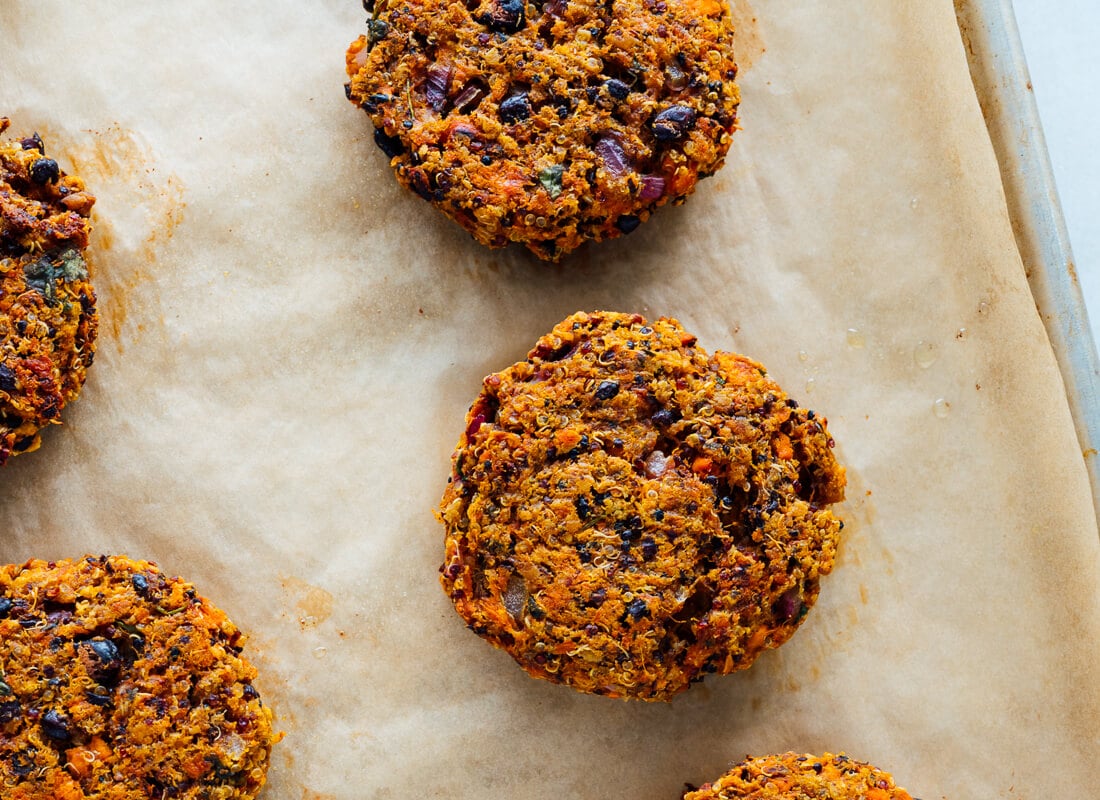Have you met my favorite veggie burgers? If not, it’s about time! I have high standards for veggie burgers, and these put all the rest to shame. I have a feeling they’ll become your favorite veggie burgers, too. These veggie burgers are hearty and satisfying, and feature an irresistible combination of flavors. They start with a base of quinoa, black beans and oats. Then we amp up the volume with sweet potatoes, fresh herbs, and some carefully chosen seasonings. They’re a little sweet and a little spicy, in the best of ways.
You may recognize this recipe as the “Sweet Potato and Black Bean Veggie Burgers” that have been hidden in the archives for quite some time. There’s a chance you’ve enjoyed these burgers in my cookbook, Love Real Food, sandwiched between buns with a crisp lime-cilantro cabbage slaw and guacamole (page 177). Or maybe you’re seeing these burgers for the first time right now! If so, I’ll share why this veggie burger recipe is my favorite:
Watch How to Make Veggie Burgers
Veggie Burger Cooking Options
You have three cooking options for these veggie burgers, and we’ll start with my favorite one.
1) Oven-Baked
I love baking these veggie burgers in the oven. It’s the easiest way to cook a bunch at once, and they turn out beautifully cooked through and golden on each side.
2) Grilled
These burgers grill well, too! I’ve successfully grilled them on the grates without the burgers falling apart. (If you do run into any trouble, just chill the burgers for a bit before trying again.)
3) Stovetop
Lastly, you can cook these veggie burgers in a skillet on the stovetop. The stovetop isn’t my favorite method because it requires more babysitting than the oven, but it’s totally doable. These burgers are extra moist inside. Check the recipe notes for details.
Veggie Burger Ingredients
These veggie burgers are made with easy-to-find, healthy ingredients. Here’s what you’ll need:
Sweet potatoes: For the best results, weigh your sweet potatoes at the store to ensure you’re starting with the right amount. Ideally, choose smaller sweet potatoes because they’ll cook a little quicker. We’re going to slice them down the middle and roast them until tender. Quinoa: We’ll start with raw (uncooked) quinoa, and you’ll find instructions on how to cook it within the recipe. Or, if you happen to have 1 1/2 cups leftover cooked quinoa, you can use that instead. Millet will work in place of quinoa, too (check the recipe notes for details). Black beans: Canned or home-cooked will work, as long as they are rinsed and well-drained. Though I have’t tried, I bet you could substitute an equal amount of pinto beans, chickpeas or white beans in a pinch. Red onion, cilantro, and garlic: If you’re sensitive to any of these flavors, don’t worry, they mellow during cooking and produce a delicious end result. Spices: Adobo sauce (from a can of chipotle peppers in adobo) or smoked paprika lend some smoky grilled flavor. We’ll also add cumin, chili powder, and salt. Quick-cooking oats: Oats absorb excess moisture and offer a dose of whole grains. You can also use old-fashioned oats, pulsed briefly in a food processor or blender to break them up.
Veggie Burger Serving Suggestions
Burger Accompaniments
Serve these burgers as, well, burgers! Find some great buns, or use butter lettuce leaves for a low-carb, gluten free options. Add any of the following:
Ripe, juicy sliced tomato Crisp lettuce or fresh sprouts Pickles Sliced cheese Onion, very thinly sliced Avocado or guacamole Ketchup and mustard Maybe even fried eggs
Side Dish Suggestions
These burgers would go nicely with my Simple Healthy Slaw or Gaby’s Cucumber Salad. You could make extra quinoa while you’re at it (you’ll need a total of 1 1/2 cups cooked quinoa for the burgers), and make my Sun-Dried Tomato, Spinach and Quinoa Salad or Favorite Quinoa Salad.
Ideas for Leftovers
Keep these burgers on hand for quick, healthy meals. Leftover cooked patties store well in the freezer for several months. Warm one up and serve it with a simple green salad, or a quesadilla, or any hodge-podge of ingredients you may have. However you serve them, these burgers will add some additional veggies, fiber and protein to your meal.
Please let me know how your veggie burgers turn out in the comments! I love hearing from you.
*Adobo sauce note: Buy canned or jarred chipotle peppers in adobo and use the sauce. You’ll usually find this ingredient in the international or Hispanic aisle of the grocery store. You can transfer leftover peppers and their sauce to a freezer bag, squeeze out any remaining air, and freeze for later use. **Oats note: You can use old-fashioned oats instead, if you briefly blend them in a food processor or blender until broken into smaller pieces (not as fine as flour). Stovetop cooking method: Heat 1 tablespoon avocado oil (or other high heat oil) in a large skillet over medium heat. When it’s hot, place several burgers in the pan, leaving enough room to flip them. Cook each patty until browned and heated through, about 3 to 4 minutes per side. Add 1 tablespoon oil to the skillet for each pan of burgers you fry, and dial down the heat as necessary to prevent burning. Grilling method: Ideally, let the mixture chill in the fridge for a couple of hours before shaping the burgers and grilling. No need to coat the burgers in oil, which might burn on the grill. Shape the burgers as instructed in step 6, and cook on a grill over medium heat, turning once the undersides have turned golden and developed some grill marks. Repeat on the other side. Make it gluten free: Use certified gluten-free oats and choose your accompaniments carefully. As an alternative to buns, try butter lettuce leaves! Prepare in advance: Prepare the burger mixture and let it chill in the refrigerator (you can let it chill overnight or up to a couple of days if you’d like). Then assemble the burgers and cook as directed. Serving suggestions: These veggie burgers don’t have to be served as traditional burgers. The patties are good on their own with toppings like guacamole and pico de gallo, or in a salad with Southwestern flavors. Try serving them with corn on the cob in the summer. Recipe notes 8/18/20: The original version of this recipe called for ⅓ cup millet cooked with 1 cup water (yielding 1 cup cooked millet) and 1 cup old-fashioned oats, lightly ground in a food processor or blender until the flakes are broken up, but not as fine as flour.







